Despite last month’s political and market turmoil, the economic news remained solid if somewhat mixed. Both consumer and business confidence pulled back a bit but remained at healthy levels overall. Hiring rebounded strongly after weak results last month. This rebound should help maintain consumer and business confidence going forward, despite the December pullbacks. Finally, longer-term interest rates, which had been a concern after Fed rate hikes and hawkish commentary, also moderated.
Although there are some signs of slowing trends, notably in confidence, the continued strength of these key indicators suggests that, overall, the economic news remains solid. These conditions should support continued growth.
The Service Sector
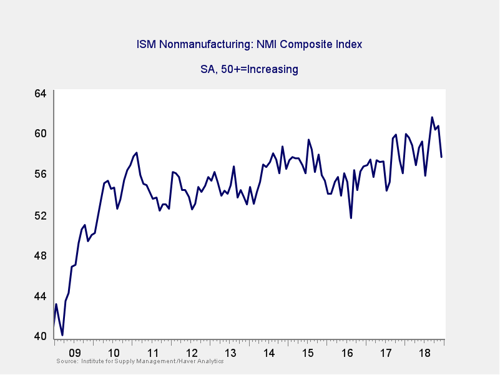
Signal: Green light
Here, a leap in September took us to a 21-year high. But confidence has pulled back in subsequent months, with a surprisingly large drop in December. That said, it still remains at a healthy level, one consistent with most of 2017 and 2018. This is a diffusion index, where values above 50 indicate expansion. So, the current level suggests that growth is likely to continue for the next several quarters. The indicator also remains on a steady long-term trend line (as you can see in the chart above), suggesting that business confidence bounces around but has remained solid for the past couple of years. This indicator stays at a green light.
Private Employment: Annual Change
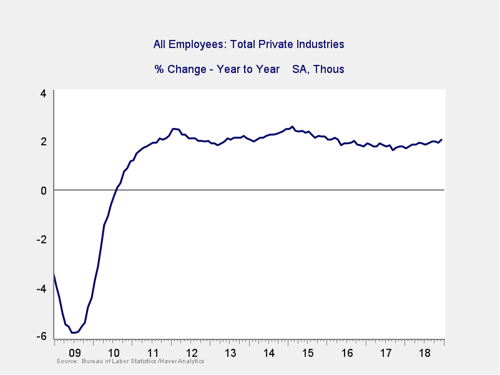
Signal: Green light
December job growth came in at 312,000, which was well above expectations and included substantial upward revisions to the previous two months. Overall labor demand was even stronger, with the average weekly hours worked rising as well. The continuation of growth in the year-on-year trend, as shown in the chart above, suggests that labor demand remains strong and is likely to stay at a healthy level for the foreseeable future. As such, this indicator remains a green light.
Private Employment: Monthly Change
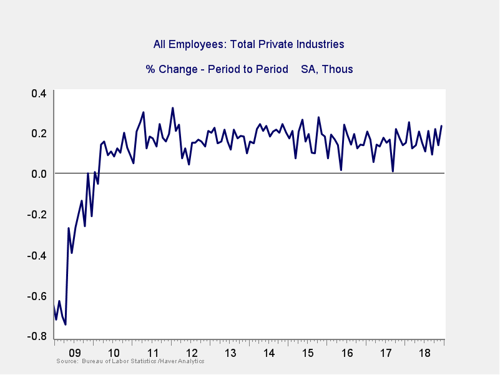
Signal: Green light
These are the same numbers as in the previous chart but on a month-to-month basis, which can provide a better short-term signal.
As noted above, December came in well above expectations, and both October and November were revised upward. This result suggests that not only does job growth continue but that it is steadier than estimated. As with the other signals, and given the continued healthy long-term trends, this indicator remains a green light.
Yield Curve (10-Year Minus 3-Month Treasury Rates)
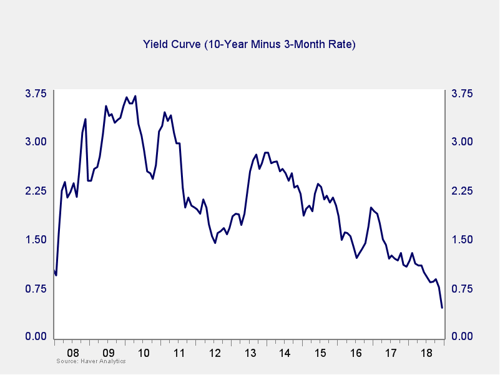
Signal: Green light
The spread between the 10-year and 3-month rates ticked down last month, as 10-year rates dropped back further after a spike. This decline in the spread takes us closer to the trouble zone, but it is still well away from it. So, we are leaving this indicator at a green light.
Consumer Confidence: Annual Change
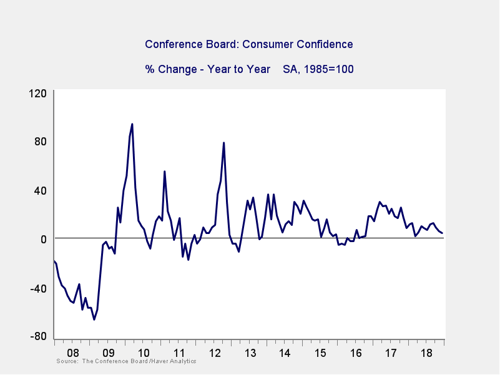
Signal: Green light
Consumer confidence pulled back more than expected in December, from 135.7 to a still healthy 128.1, on a surprising decrease in consumer expectations about the future. With current confidence remaining strong and the annual change remaining positive, this indicator is still well outside the trouble zone. But the decrease in expectations may indicate further declines ahead. That said, confidence remains high on an absolute basis, typically signaling continued growth, and the annual change remains both positive and outside the trouble zone. Despite possible future concerns, there are no signs of immediate risk. We will leave this indicator at a green light.
Conclusion: Economy growing, some slowing but trends still positive
All four indicators remained positive on an absolute basis, and the data continues to be healthy. Although signs of weakness in confidence bear watching, recent improvements in hiring after a period of relative weakness suggest that present conditions remain favorable overall.
The economy gets a green light for January.



 Print
Print

